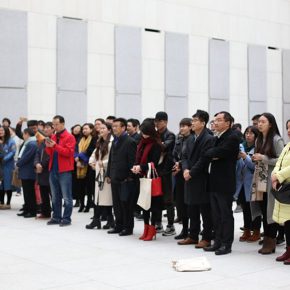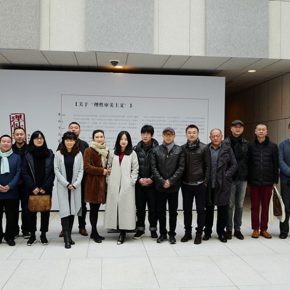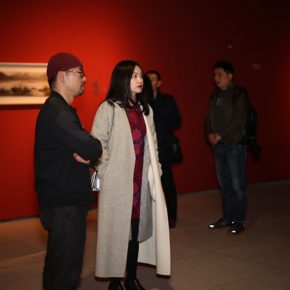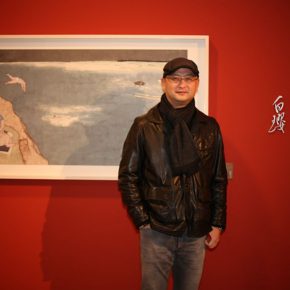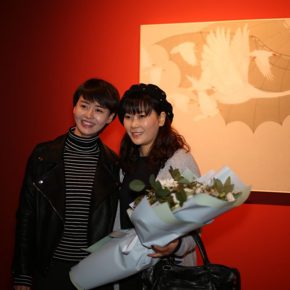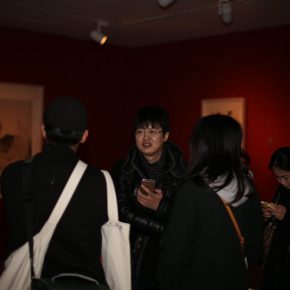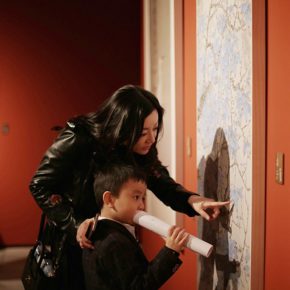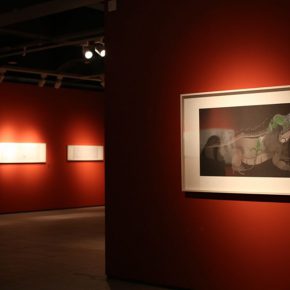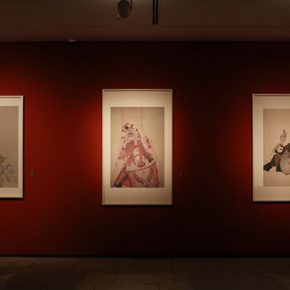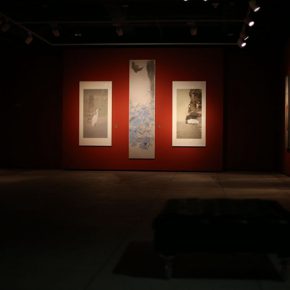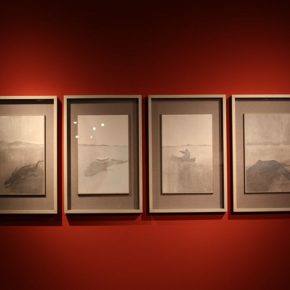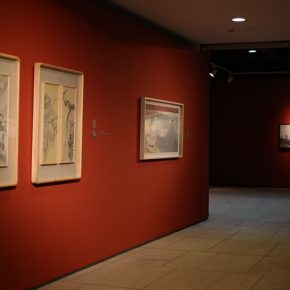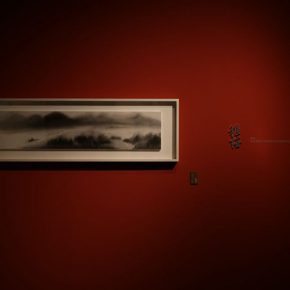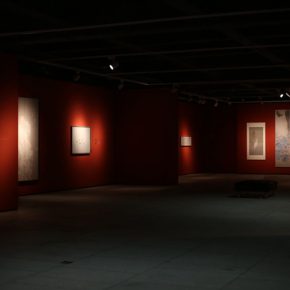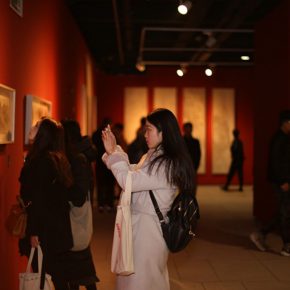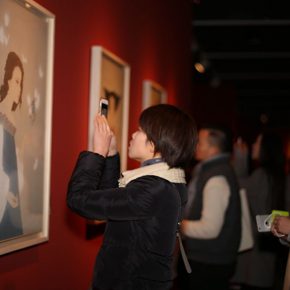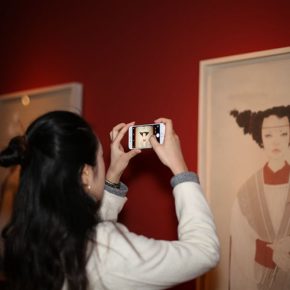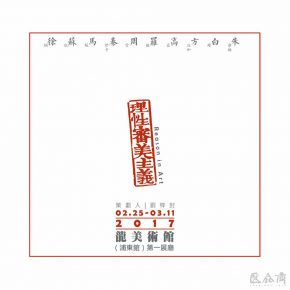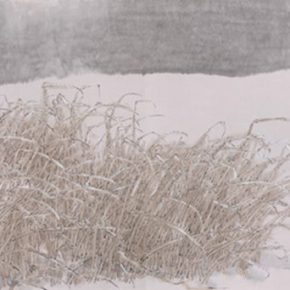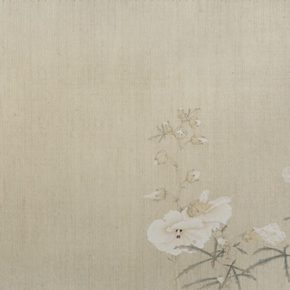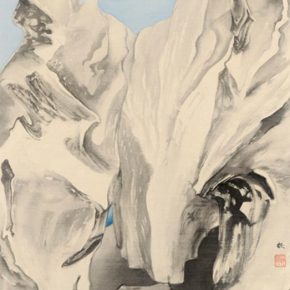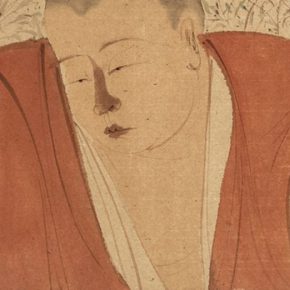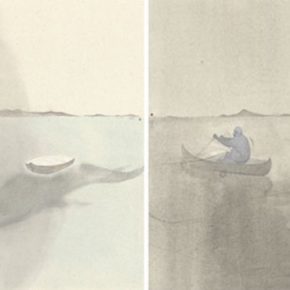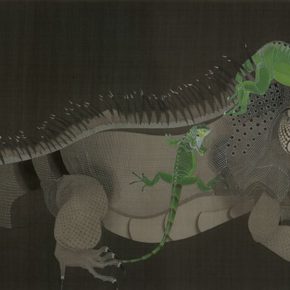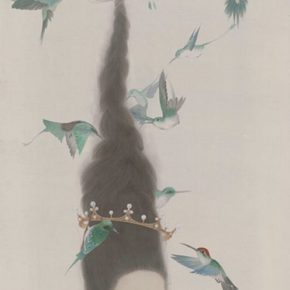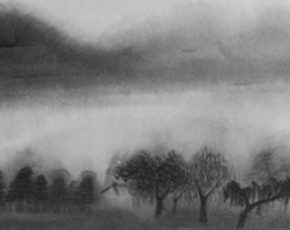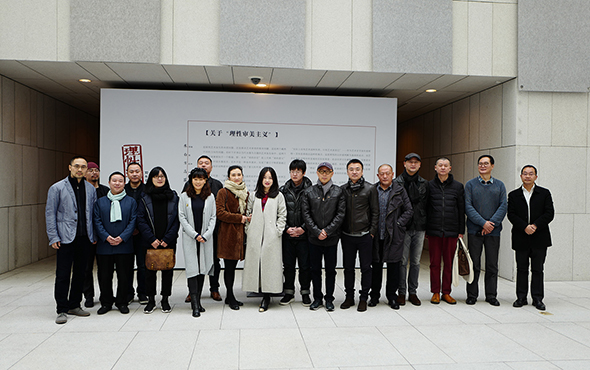
On February 25, 2017, “Reason in Art: 10 Contemporary Chinese Ink Painters Group Exhibition” opened at the Pudong Hall of the Long Museum, it was curated by Liu Zifeng with a discussion around the topic of “Reason in Art” presenting ink works by Xu Gang, Su Rui, Ma Jun, Qin Xiuping, Zhou Xue, Luo Ying, Gao Qian, Fang Zhenghe, Bai Ying and Zhu Yamei.
What is the reason in art? What is the meaning and requirement for creators, critics, and audiences of contemporary ink? Before the opening of the exhibition, CAFA ART INFO interviewed the curator Liu Zifeng and related participating artists:
The Origin of the Topic:Liu Zifeng: I don’t curate such an exhibition in order to build a cognitive perspective of the value of ink, in fact, it doesn’t need to be built, for it has always been there, and the “reason in art” is nothing but to return to the cognitive system, returning to the original framework of art creation that is associated with the general aesthetic.
George Santayana: the Source of the Theory of the TopicLiu Zifeng: A fine work of art is certainly the product of a combination of theory and reality. George Santayana talked about a theory which is effectively applied in the creative ontology of Chinese ink painting, so that, the topic is opened by his aesthetic thinking. In fact, many ideas on oriental philosophy can also solve this problem, but it is too huge, too many involved ideas of “reason in art” and it has a big radiant surface, but relatively speaking Santayana’s argument is more clear and specific.
Reason in Art: Western Perspective, Contemporary Context and Ink PaintingLiu Zifeng: The cultural collision and blending must produce a new value and significance, the fact proves that the introduction and reference of new ideas and concepts improves Chinese painting towards a diversified development, and it also really brings vitality.
From Tradition to Modern, the Creation is Effected by Different Aesthetic ContextsBai Ying: Changes of cultural context is an inevitable history, creation of ink painting is built on the basis of the individual aesthetic understanding, and the presentation of works are dominated by aesthetic awareness.
Zhou Xue: It is necessary to learn of the valuable things in the modern art and to retain real fine things in traditional art.
Su Rui: I think I am currently rational and I will not completely reject or fully believe in certain ideas, but I care whether it is more suitable for my study or creation as well as whether it is my goal or not.
Artist’s Essential Knowledge of AestheticsBai Ying: Aesthetics is a broad concept, and the core of Oriental aesthetics that stands on the level of subjective and objective integration, is different from the West. Entering the new century, the original single aesthetic system was affected by foreign culture, and its value have been developed, while diversified coexistence has become a trend, the uncertainty and ambiguity of the aesthetic boundary will remain for a long time.
Su Rui: The essence of aesthetics for me is from the inner perception and experience of some things in life, and some small things might lead to my thinking and creation.
As an Artist, the Response to the Theory of “Reason in Art”Zhou Xue: Whether it is contemporary ink or traditional ink, the fundamental topic is the ink painting, so that the basis of the language is the same, but the content and narrative methods are changed. Therefore, standing in the artist’sperspective, the use of ink painting as the basic form to create and showcase beauty is my duty, while discussing the meaning of beauty is the theorists’ duty.
“Reason in Art” Participating Artists’ Brief Commentaries:Bai Ying says that: “Sometimes I draw a combination of men and women or a single male figure, while it is purely a casual sentiment that makes me chosemen and women in this restless society.”
Liu Zifeng comments on Fang Zhenghe that: “Fang Zhenghe’s name is in line with his painting, which is upright.”
Xu Lei comments on Gao Qian’s work, “Her work is like a crime scene, and all things form a chain of evidence that directs one to an absent body.”
Wan Muchun says that, “Luo Ying builds the coexistence of ancient and modern charms in a new way.”
Liu Zifeng says that, “Seeing Ma Jun’s paintings, I inadvertently link them with the distance of one millimeter.”
Qin Xiuping says that, “Although Chinese culture is not only characterized by brush and ink, it greatly makes my works have a sense of belonging in the culture, while the item of cultural property is precisely what I value the most.”
Su Rui says that, “My personal view is that ‘depth’ is ‘new’.”
Xu Gang said that, “Holding both the meaning and image is the benchmark for the younger generation.”
Zhou Xue says that, “My paintings are irrelevant to the reality and far from reality, because I just want to show the beautiful inner world and happy memories.”
Zhu Yamei says that, “As a contemporary landscape painter, only returning to my own mind, carefully listening to the sound of the heart in the quiet then you are able to make an artistic choice that is suitable for you.”
Photo courtesy of the organizer, translated by Chen Peihua and edited by Sue/CAFA ART INFO


